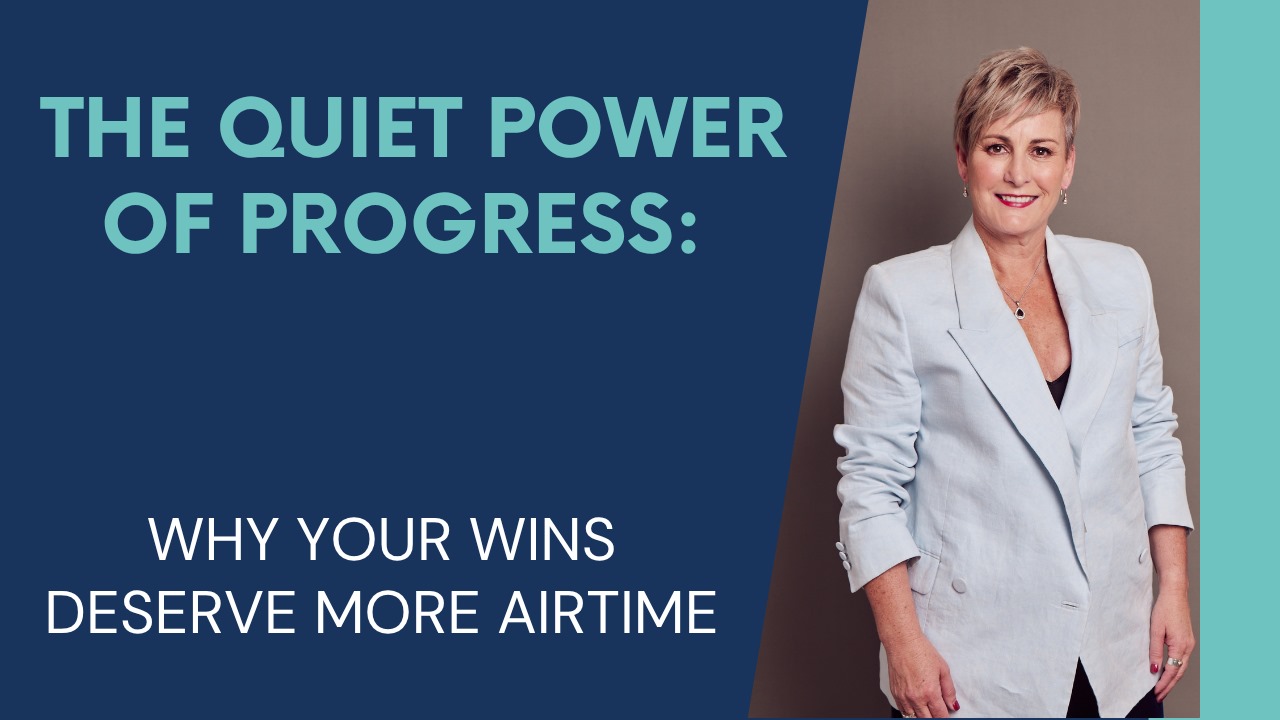
In leadership, we’re wired to look ahead. To the next deadline. The next deliverable. The next fire to put out.
But what happens when we don’t look back—even briefly?
We miss the quiet power of progress.
Lately, in coaching conversations with senior leaders and HR professionals across industries, a similar pattern has emerged: “I didn’t realise how much we’d achieved until we stopped to reflect.”
That insight is both humbling and instructive.
Because in the busyness of delivery, we can overlook what really matters. We become so focused on performance that we forget to celebrate progress. And in doing so, we miss one of the most powerful leadership levers available: reflection.
So, I’ll ask you what I’ve been asking my clients:
What wins are you not celebrating because you’re already moving on?
When we do take the time to pause, the most significant progress often isn’t the headline stuff. It’s not just increased profit margins or the rollout of a new system.
It’s the culture shifts. The leadership moments.
These aren’t just tasks ticked off. They’re cultural markers. Evidence that your leadership is landing.
Let’s talk brain science for a moment.
When we celebrate progress, big or small, our brain releases dopamine. That’s the reward chemical. It reinforces the behaviour and creates momentum. It also builds psychological resilience, because your brain starts associating effort with reward, rather than stress or fatigue.
Harvard research backs this up. In one study, people who tracked and celebrated small daily wins reported significantly higher levels of motivation and engagement. They felt more confident, more creative, and better equipped to manage change.
Reflection isn’t indulgent. It’s strategic. And yet, we resist it.
Why?
Because we’re taught that stillness equals stagnation. That celebrating success is self-congratulatory. That pausing makes us vulnerable to falling behind.
But the truth is, recognising your progress is what helps you move forward with clarity and conviction.
July is a natural inflection point. It’s half-time. A chance to step back and ask:
This isn’t just about reviewing KPIs. It’s about reconnecting to purpose. Realigning your people. And checking that your processes are still serving you.
Which brings me to my framework: the 3P Relationship-Centred Leadership model—Purpose, People, Process.
Purpose clarifies decisions. It filters distractions. It makes the hard days easier, because you’re not just clocking hours. You’re building something meaningful.
Mid-year is the time to ask:
Tip: Anchor your next six months in a “yearly theme” that connects back to your vision. Then, celebrate the small wins that move you closer to that outcome. Neuroscience tells us celebration isn’t fluff—it fuels momentum.
Leadership isn’t just strategy. It’s relationships.
The best leaders know how to build trust, hold space, and bring out the best in others. But too often, we get caught in the delivery loop and miss what our people need most: presence, safety, and clarity.
Ask yourself:
Tip: Have a weekly 1:1 check-in with each of your people. The neuroscience is clear: psychological safety drives engagement, innovation, and retention.
Even the most people-focused culture needs structure. Leadership isn’t just emotional intelligence, it’s operational clarity.
Tip: Audit your operating rhythm. Look at your recurring meetings, reporting tools, and communication loops. Where can you simplify? Where can you automate? Small tweaks to process can free up hours and reduce decision fatigue.
Take this moment. Carve out 30 minutes. Revisit your goals, personally and professionally. Notice what’s changed. Celebrate what’s working. And decide what you want to create in the second half of the year.
Because sometimes the next best step isn’t a new one.
It’s standing still just long enough to see how far you’ve come.
If you’re a senior leader or HR professional who’s been running hard, but unsure if your energy is translating into impact, this is your moment to reset.
Through my 3P Relationship-Centred Leadership approach, I’ll help you pause with purpose, reflect meaningfully, and recalibrate your leadership rhythm for the second half of the year.
You’ll walk away with:
Ready to make the second half of 2025 your most aligned and impactful yet?